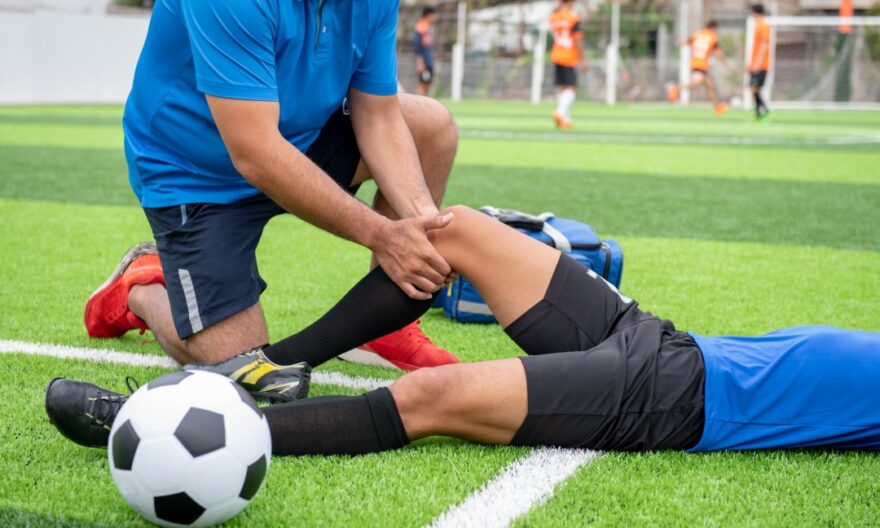
Sports injuries are an inevitable part of an active lifestyle, and in a bustling metropolis like Singapore, where sports and fitness are highly valued, the need for effective management and treatment of such injuries is paramount. Whether you’re an athlete, a fitness enthusiast, or someone who enjoys recreational activities, understanding how to deal with sports injuries can greatly impact your recovery and overall well-being. In this comprehensive guide, we’ll delve into essential tips for managing and treating sports injury in Singapore, offering valuable insights and practical solutions to help you get back on track swiftly and safely.

Why This is Matters
Imagine you’re in the middle of a thrilling game or pushing your limits during a workout session when suddenly, you feel a sharp pain or discomfort. It’s a scenario familiar to many, and the way you handle it can make all the difference. Knowing how to manage and treat sports injuries effectively not only accelerates your recovery but also minimizes the risk of long-term complications. This topic is vital because it empowers individuals to take control of their health, enabling them to bounce back stronger and continue pursuing their passion for sports and fitness with confidence.
Understanding the nuances of sports injury management is particularly crucial in a dynamic city like Singapore, where the pursuit of excellence is deeply ingrained in the culture. With access to world-class facilities and expert healthcare professionals, individuals have the opportunity to receive top-notch care and guidance tailored to their specific needs. By equipping yourself with the right knowledge and resources, you can navigate the journey of injury recovery seamlessly, ensuring that setbacks become mere stepping stones on your path to success.
Maintaining a Relatable Tone
Now, let’s talk about this in a way that feels less like a lecture and more like a friendly chat over coffee. Picture this guide as your trusted companion, offering practical advice and friendly reassurance every step of the way. We’ll skip the complex medical jargon and dive straight into the heart of the matter because let’s face it – when you’re dealing with a sports injury, clarity and simplicity are your best allies.
Alright, let’s get started on this journey to understanding sports injury management in Singapore. Grab a seat, take a deep breath, and let’s explore the fascinating world of injury recovery together.
Essential Tips for Managing and Treating Sports Injuries in Singapore
1. Know When to Seek Help
- Recognize the signs and symptoms of a sports injury, such as pain, swelling, and limited range of motion.
- Don’t ignore persistent discomfort or assume it will go away on its own. Consult a healthcare professional for proper evaluation and diagnosis.
2. Choose the Best Sports Injury Clinic
- When selecting a sports injury clinic in Singapore, prioritize factors such as expertise, reputation, and facilities.
- Look for clinics with experienced sports medicine specialists who understand the unique demands of athletes and fitness enthusiasts.
- Consider accessibility and convenience when choosing a clinic, ensuring that you can easily schedule appointments and follow-up visits.
3. Follow the R.I.C.E. Protocol
- Rest: Give your body time to heal by avoiding activities that exacerbate the injury. However, it’s essential to strike a balance between rest and gentle movement to prevent stiffness and muscle atrophy.
- Ice: Apply ice packs to the affected area for 15-20 minutes every few hours during the initial 48 hours post-injury to reduce swelling and inflammation. Remember to wrap the ice pack in a towel to protect your skin.
- Compression: Use compression bandages or wraps to support the injured area and minimize swelling. Ensure that the compression is snug but not too tight, as excessive pressure can impede blood flow.
- Elevation: Elevate the injured limb above heart level whenever possible to facilitate drainage of fluid and reduce swelling. Prop up pillows or cushions to support the limb while resting.
4. Implement Rehabilitative Exercises
- Work with a physiotherapist or sports rehabilitation specialist to design a customized exercise program tailored to your injury and fitness level.
- Focus on strengthening the muscles surrounding the injured area to improve stability and prevent re-injury. Incorporate a combination of resistance training, stretching, and functional exercises.
- Gradually increase the intensity and duration of your exercises as tolerated, but listen to your body and avoid pushing through pain.
5. Embrace Alternative Therapies
- Explore complementary treatments such as acupuncture, chiropractic care, or massage therapy to supplement conventional rehabilitation.
- Keep an open mind and discuss your options with your healthcare provider to determine the most suitable approach for your needs.
- Remember that individual responses to alternative therapies may vary, so be patient and persistent in finding what works best for you.
6. Prioritize Proper Nutrition and Hydration
- Fuel your body with a balanced diet rich in nutrients that support healing and tissue repair. Include plenty of fruits, vegetables, lean proteins, and whole grains in your meals.
- Stay hydrated by drinking an adequate amount of water throughout the day, especially during and after exercise. Dehydration can impair recovery and exacerbate inflammation, so make hydration a priority.
- Consider incorporating anti-inflammatory foods and supplements, such as omega-3 fatty acids, turmeric, and ginger, into your diet to help reduce pain and swelling.
7. Practice Patience and Persistence
- Understand that recovery from a sports injury is a gradual process that requires time, dedication, and consistency.
- Set realistic goals and celebrate small milestones along the way to stay motivated and focused on your progress.
- Listen to your body and adjust your rehabilitation plan as needed based on how you feel. Avoid rushing the recovery process or returning to activity too soon, as this can increase the risk of re-injury.
Final Words
Navigating the journey of managing and treating sports injuries in Singapore can be both challenging and rewarding. By equipping yourself with the right knowledge and resources, you can overcome obstacles with confidence and resilience. Remember, sports injuries are not the end of the road – they’re merely detours on your path to greatness. With the support of skilled healthcare professionals and a proactive approach to recovery, you can emerge stronger, fitter, and more resilient than ever before. So, embrace the journey, stay focused on your goals, and never underestimate the power of perseverance. Here’s to your health, vitality, and endless pursuit of excellence!




